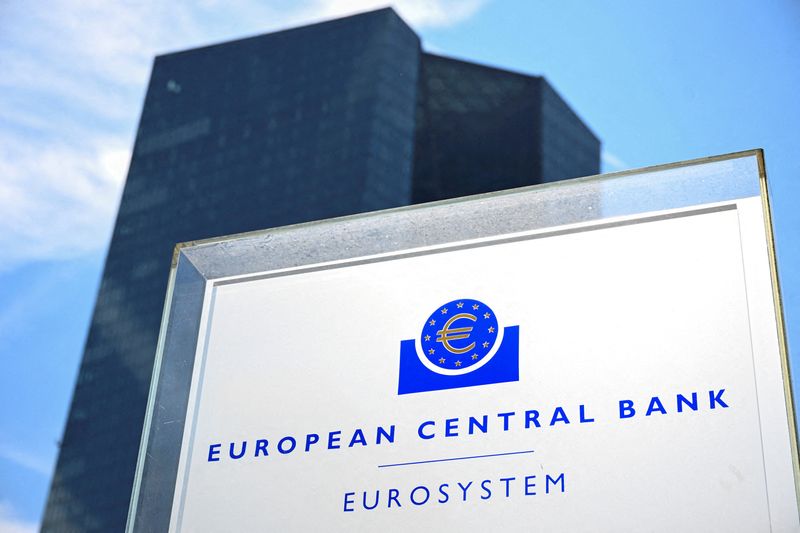By Balazs Koranyi and Francesco Canepa
FRANKFURT (Reuters) -The European Central Financial institution is sort of sure to chop rates of interest once more on Thursday, however with inflation dangers simmering regardless of anaemic progress, buyers can be combing its message for clues on additional easing.
The ECB lowered its deposit fee to three.75% in June and an array of policymakers have already backed one other lower, suggesting their debate is prone to deal with how shortly borrowing prices must fall in subsequent conferences.
The seemingly consequence is that ECB President Christine Lagarde will follow the financial institution’s current narrative that choices are taken assembly by assembly, primarily based on incoming knowledge with no pre-commitments.
However she can also say that every one conferences are “live”, protecting open the door to a lower in October, even when some conservative hawks make the case for slower easing whereas inflation throughout the 20-country euro zone stays above the ECB’s 2% goal.
“While an October rate cut could happen … we think it is unlikely that the incoming information between the September and the October meeting will be sufficiently weak to bring an October rate cut in play,” Danske Financial institution’s Piet Haines Christiansen mentioned.
Extra dovish policymakers, primarily from the bloc’s south, are prone to argue that recession dangers are rising and that with inflation inside placing distance of the goal at 2.2%, ECB charges at the moment are limiting progress way over wanted.
However inflation-wary hawks, who’re nonetheless in a majority, say the labour market stays too scorching for the ECB to take a seat again, and that underlying worth pressures, as evidenced in cussed companies prices, increase the chance of resurgent inflation.
NEW FORECASTS
New financial forecasts are unlikely to settle the talk.
Quarterly projections from the ECB’s workers are anticipated to point out barely decrease progress this 12 months and inflation broadly on the identical path as in June and set to return to 2% on a “sustainable” foundation by the second half of subsequent 12 months.
Which means few if any policymakers are prone to argue in opposition to additional easing, with the important thing divide being simply how shortly the ECB ought to transfer.
“Whilst we think the ECB is in no rush to cut rates, it also does not want to keep rates too high for too long,” Pimco portfolio supervisor Konstantin Veit mentioned. “We continue to envision that the ECB will cut rates at staff projection meetings, and anticipate its third cut in December.”
Hawkish policymakers have made clear that they see quarterly fee cuts as acceptable, since key progress and wage indicators – which inform the ECB’s personal projections – are compiled each three months.
Traders are additionally divided, with one other lower by December absolutely priced into monetary markets however the probability of an interim transfer in October oscillating between 40% and 50%.
Lagarde’s principal process in her 1245 GMT information convention can be to maintain all choices on the desk with out stoking expectations for October.
“For now, we believe the quarterly rate cut path will hold, with domestic inflation and underlying labour cost pressures still too high for comfort,” Societe Generale (OTC:)’s Anatoli Annenkov mentioned.
“For accelerated policy easing, we believe the labour markets in particular will need to show signs of a faster deterioration, something that has remained elusive.”
TECHNICAL RATE CUT
With Thursday’s transfer, the ECB’s deposit fee will fall by 25 foundation factors to three.5%. The refinancing fee is in the meantime prone to fall by a a lot greater 60 foundation factors in a long-flagged technical adjustment.
The hole between the 2 rates of interest has been set at 50 foundation factors for years and the ECB introduced plans in March to slim this hall to fifteen foundation factors from September in a transfer that would ultimately rekindle lending between banks.
Such a revival continues to be years away, so the ECB’s transfer is a pre-emptive adjustment of its working framework.
For now, banks are sitting on 3 trillion euros of extra liquidity and deposit this with the financial institution in a single day, making the deposit fee in impact the ECB’s principal coverage instrument.

Over time this liquidity ought to dwindle, pushing banks to borrow once more from the ECB on the refinancing fee, historically the central financial institution’s benchmark rate of interest.
As soon as that occurs, the primary fee will regain its headline standing, whereas the narrower fee hall ought to assist the ECB higher handle market charges.




